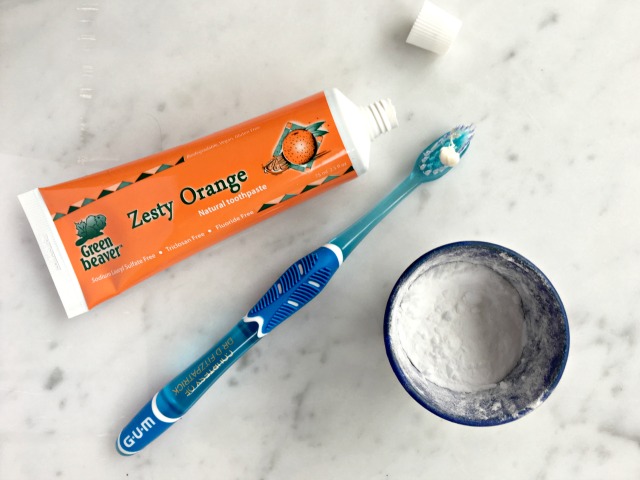Considering the fact that toothpaste is one of the most-used personal care products, you’d think that the conventional brands would be less toxic.
Have you ever watched a child suck the sweet foam of toothpaste off a tooth brush when they’re cleaning their teeth? Kid’s toothpaste tastes good – almost like candy in a tube, so what child wouldn’t want to swallow a little bit while brushing? Even regular toothpaste is extra sweet. And while older kids and adults likely aren’t swallowing their tooth paste foam, we’re all pretty cavalier when it comes to using the stuff.
But have you ever read the safe-use instructions on a tube of toothpaste?
“Do not swallow. Children under 6 years of age should use only a pea-sized amount and be supervised while brushing.”
There are a 4 reasons why you should never swallow toothpaste:
- Conventional toothpaste contains the artificial sweetener Saccharin. Health Canada banned the use of Saccharin in food 30 years ago due to animal studies that linked consumption to an increased risk of bladder cancer. As of last year the ban has been lifted. According to Health Canada more recent studies have determined that the carcinogenic effect of saccharin in rats is not relevant to humans. But not all scientists agree.
- Many brands also contain Triclosan as an antibacterial agent. There are concerns that triclosan is a hormone disruptor, and may interfere with thyroid hormone. As well, there are concerns that it contributes to antibiotic resistance or the development of “super bugs”. And triclosan is an environmental pollutant (it travels through sewerage treatment plants and accumulates in the environment).
- Then there is the controversy around fluoride. It’s not that fluoride is bad it’s just that we may be getting too much of it. When you combine toothpaste, fluoridated drinking water in some communities (not Rothesay or Quispamsis) and the consumption of all sorts of processed foods that are made with municipal water that is fluoridated, some health experts are worried that we’re ingesting too much fluoride. As a result it is recommended that children under the age of two shouldn’t use toothpaste with fluoride and all children should be supervised while brushing to prevent swallowing.
- And finally, many toothpastes contain artificial colours (lots of blue dye) and flavours.
Now that you know some ingredients you might like to avoid, there are several alternatives to conventional drug store toothpaste.
Many natural brands have fluoride-free options, and are also saccharin-free and Triclosan-free. Some still contain sodium lauryl sulfate (a foaming agent that can become toxic during processing). Green Beaver (made in Canada) is my go-to brand.
These brands are more expensive than convention brands but keep in mind you only need a small amount to do the job.








